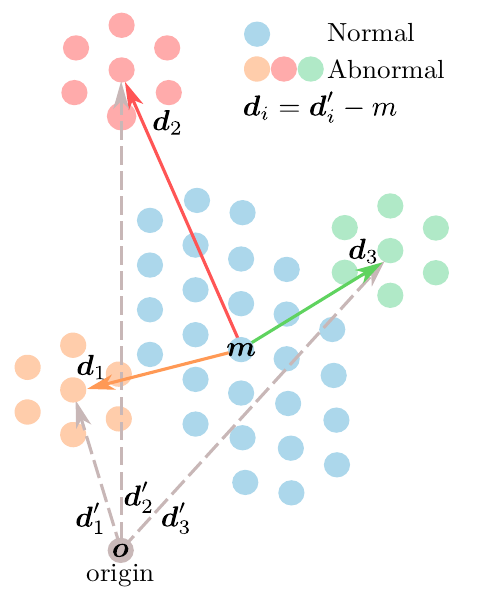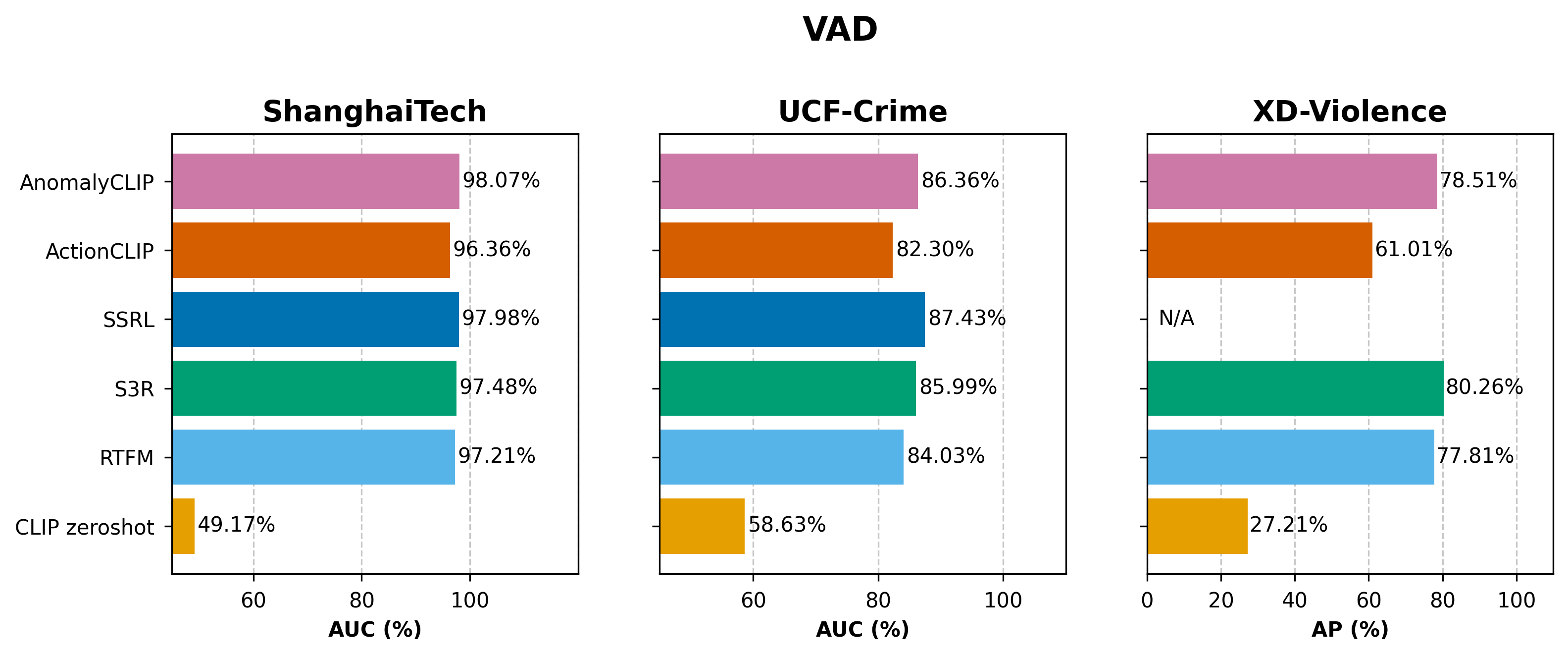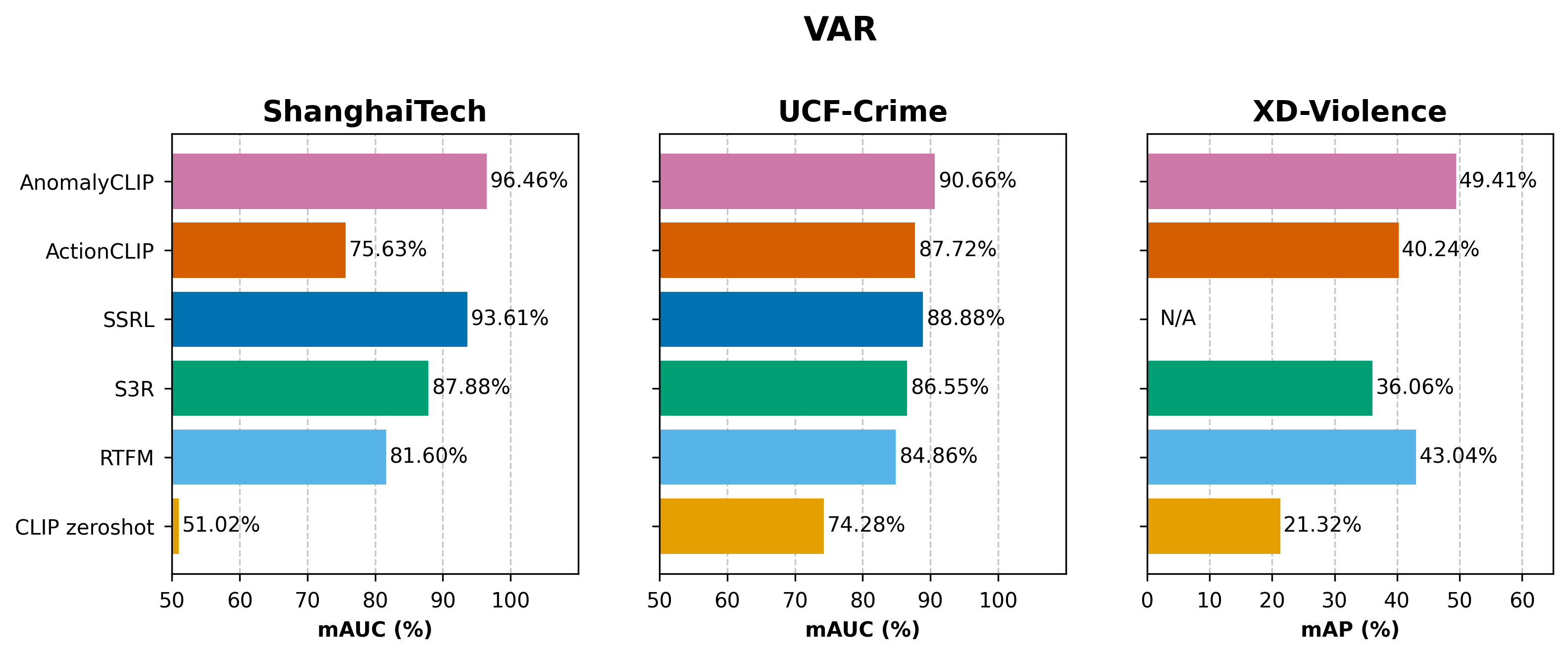We tackle the complex problem of detecting and recognising anomalies
in surveillance videos at the frame level, utilising only video-
level supervision. We introduce the novel method AnomalyCLIP,
the first to combine Large Language and Vision (LLV) models, such
as CLIP, with multiple instance learning for joint video anomaly
detection and classification. Our approach specifically involves
manipulating the latent CLIP feature space to identify the normal
event subspace, which in turn allows us to effectively learn text-
driven directions for abnormal events. When anomalous frames
are projected onto these directions, they exhibit a large feature
magnitude if they belong to a particular class. We also introduce a
computationally efficient Transformer architecture to model short-
and long-term temporal dependencies between frames, ultimately
producing the final anomaly score and class prediction probabilities.
We compare AnomalyCLIP against state-of-the-art methods
considering two major anomaly detection benchmarks, i.e. ShanghaiTech,
UCF-Crime, and XD-Violence, and empirically show that it outperforms
baselines in recognising video anomalies.



